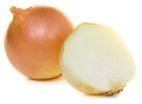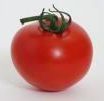Fruit and Vegetables
Alex and I did not like "beige" food, so we would always add colour. In our kitchen, colour came in the form of fruit and vegetables which, as we all know, form part of a healthy diet. We incorporated peas, red peppers, Savoy cabbage, mango, fresh strawberries and cherries when in season to name but a few. Below are some other ideas.
Apples can be cooked and puréed or, if eaten raw by a dysphagic patient with a teaspoon, can be grated, sprinkled with a little honey and lemon juice to prevent oxidation (see Blending section above) and served immediately.
Avocados, weight for weight, provide more good type fat, fibre, vitamin E, folic acid and potassium than any other fruit. They are also easily digested, which makes them ideal for people that have problems digesting fatty foods. A ripe one, mashed with a fork and a little seafood sauce or vinaigrette sauce added, makes a lovely cracker topping or mashed with lemon juice, onion, garlic, tomato and chillies to make the classic Mexican dip, guacamole. Do not forget to experiment using them in soups, although they are more nutritious raw.

Blueberries have the highest antioxidant content of all commonly eaten fruits. Try adding some to a fruit smoothie for the dysphagic patient.
Kiwi fruit are a great source of vitamin C (as much as in an orange) and unusually for a fruit, kiwis are also a source of vitamin E which is usually found in nuts and oils. They are another good ingredient for a fruit smoothie.

Broccoli contains a wealth of healthy compounds including potassium. Alex and I used to eat it raw with a dip, but later I could only incorporate it into blended soups and stews for him.
Garlic. Vampires aside, garlic is a great source of vitamin C, potassium and other nutrients. I seem unable to cook savoury dishes without it.
Onions contain fibre, vitamins and minerals. In my kitchen they go almost hand-in-hand with garlic and their cousin the leek in many savoury dishes which can be blended for the dysphagic patient. I even used to very finely chop raw ones for Alex's salad-type toppings. If you both eat it, you will not smell it - the same applies to garlic.

Sweet potatoes are a great source of vitamin C, fibre and potassium. They can be used as conventional potatoes (mashed) but, because of their natural sweetness, can also be slow-baked with a sprinkle of cinnamon, apple purée and crushed pineapple.
Red cabbage is a great source of fibre, vitamins, iron and lots of trace minerals. Although Alex could no longer eat it raw in coleslaws or salads, I used to add it when cooking soups and casseroles.
Tomatoes (even tinned) are a good source of vitamins. It is suggested that simmering them with a little olive oil makes it easier for the body to absorb the nutrients and so they can be incorporated into many tasty dishes or sauces.
